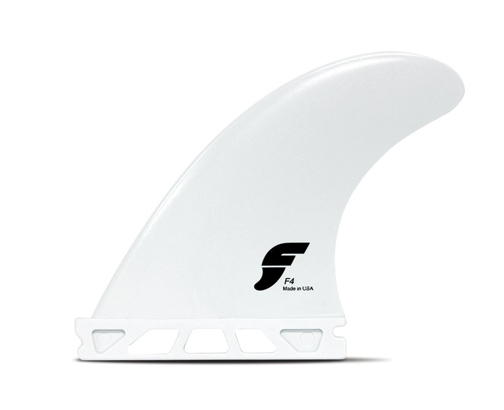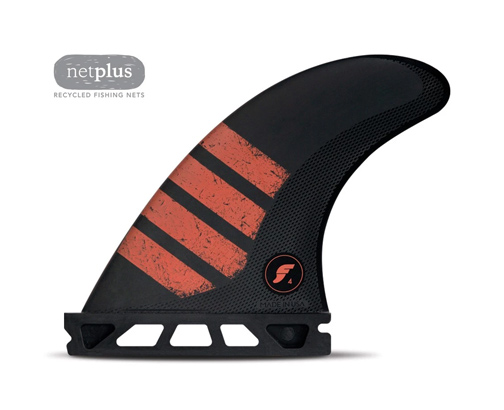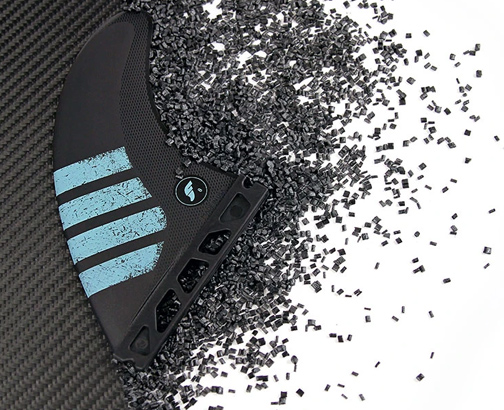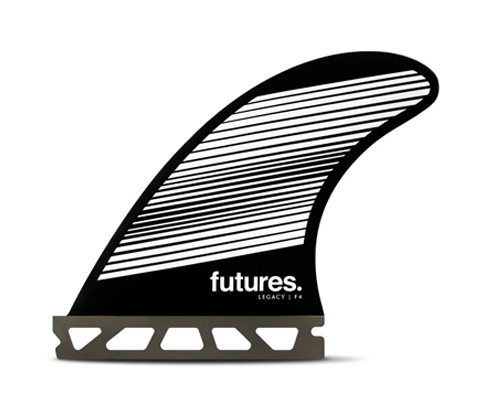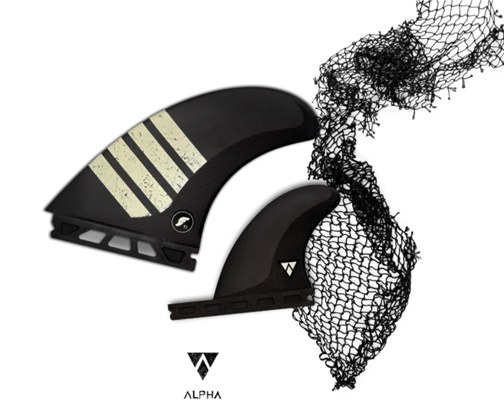Hi there - Another Fin Guru episode here. Same template, three different constructions.
How will they ride?…. let's find out!
Watch the 12 min video here or here or keep reading below
What we thought we would do today is take the F4 template from Futures, in three different constructions, and would take one of our team riders to surf these three fins in the same board and on the same day. We want to see if we can identify any differences as well as ask him if he was able to notice anything.
So first off the three constructions:
The Thermotech - their entry-level composite material. They are made in Huntington Beach in the United States, so that's pretty cool. The material is better than the FCS Glass Flex material in my opinion because the Thermotech is more rigid. But, the problem with these types of composite material fins in general, is they flex too much. When you have a fin that flexes too much what happens is you load up the fin and they bend too much and snap back too slow. For example, when you do a bottom turn. If the material is weaker it won't snap back into position and so what you end up with is a slower response.
The Alpha - This is a cool material. It's a proprietary material that futures developed with the help of 3M called Compound 6. It is a carbon fiber air injected material that they use in their molds. And that is done here in the good ole’ USA. They are Light and resilient.
The Honeycomb, or “HC” - This is a fiberglass fin with some inside space being taken up by a hexagon shaped honeycomb foam. So the honeycomb foam helps with the weight. Also because there is a little less fiberglass where the foam is it allows for a little bit more flex than an all fiberglass fin.
We got our team rider Gunner Day to go ahead and grab these three sets of fins and he took them for a surf. We thought we'd see if we can notice a difference visually and then ask him if he could notice a difference surfing them.
So first off is the Thermotech so let's check out the footage of Gunner.
All right so to me when I looked at the footage I was seeing a board that was a little bit sluggish. This kind of makes sense since it goes along with the fact that it's not a super strong resilient material. So the flex back is going to be a little slower which means the response is going to be kind of slower and weaker.
So the next fin we asked Gunner to try was the Alpha. Now the Alpha series has a slight inner foil. So that usually helps with a little bit of lift. Typically the inner foils are better in smaller waves; they give you a little bit of an advantage due to the “lift” the inner foil provides.
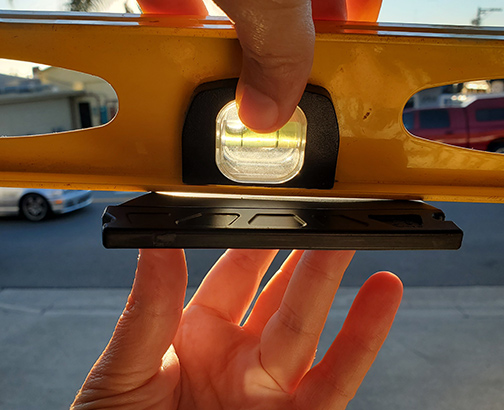
I also thought I would mention that with the Alpha material Futures teamed up with a non-profit that collects and recycles fishing nets. So Futures take those and they melt them down I guess and they incorporate it in with their Compound 6 material. So that's pretty cool!
Anyway, let's check out the footage of Gunner riding the Alpha.
Okay so to me that was night and day! What I saw was a board that had a lot more speed. I also thought that his turns were sharp and crisp. I liked what I saw for sure and I definitely feel like it was way better than the Thermotech.
So the next fin is the Honeycomb and this actually is Gunner Day's go-to
fin. This is definitely going to be a stronger material and it has a “flat” foil on the inside of the fin which i more for control and not as much "lift". So let's see what the footage looks like when Gunner puts the Honeycomb fins in his board and takes them for a surf.
All right so I definitely noticed some things about his board when he had this fin in. I felt like the board had drive but I felt like he had to work
harder to almost kind of pump it into the next gear. I also thought that when he was going off the top the turn didn't look as sharp and quick as it did with the Alpha.
So after looking at all the footage I definitely had my opinion about it.
I asked Gunner after he had surfed all three to rate the fins or tell me
which one that he thought he liked the best. While the honeycomb is Gunners go-to fin he had something interesting to say after riding them all.
“This is my go to fin (F4 Honeycombs) at home normally and I would honestly expect them to be a lot better. But, I honestly think I like the
the Alphas better. They're maybe a little bit more responsive. I think it might just be because they have more flex and are a little lighter maybe.”
So you can see that in the end the Alpha was the fin that he chose. Now I thought that was pretty cool because when I watched the footage I definitely thought that the Alpha looked the best to me. But, I was wondering if Gunner was going to choose the Honeycomb because this was the fin that he always goes to and hey let's face it fiberglass, honeycomb, definitely a cool fin. Who doesn't perceive the fiberglass Honeycomb as the ultimate in performance?! So I thought it was pretty cool that he actually thought that the Alpha worked
better.
Now what can we learn from all this? To me, what we can learn is that there might be a fin construction that has a more ideal application wave wise. I mean here we have 3 different constructions and they are the exact same template and yet, we are getting different results. The Thermotech flexes a lot making it ideal for entry level surfers. If you surf maybe 2 to 4 times a month and are a beginner, to novice, this fin would be fine. If you are anything but that, I would go with the Alphas at bare minimum. It definitely is better response and performance than the Thermotech! But ultimately I would have to say, in my opinion, a fin for everyday surf, especially here in California, would be the Alpha all day long (as long as it is available in your ideal template). We saw the footage! It definitely looked faster and better.
So when would you use the Honeycomb??? I would use the Honeycomb if the waves were good, bigger or powerful. Say if you were taking a trip to Bali, Mentawai, or good swell at Colorados... I would ride the Honeycomb. Or here in California, if you ride the Alpha every day and then you go to Rincon on a pumping swell and it's eight foot faces you will need some control...go with the Honeycomb. So in other words I would use the Honeycomb for control, to control speed and power and I would use the Alpha as your everyday because this will get a little bit more out of day to day average surf to make for the best performance possible.
What I think is really cool about this whole series is that we can hopefully demystify what fin works best. We can demystify which construction works best for which scenario. Hopefully through these tests we can all end up on a page where we learn enough that we will execute our most optimum performance by utilizing the best coordinating construction.
Anyway, we are going to be doing another one of these videos and blogs real soon. It's going to be the Merrick medium. We're going to have Gunner ride the Merrick medium in the Honeycomb, the Alpha and the Blackstix. So those are three different constructions that we're going to take a look at and hopefully we'll be able to see if we can notice any differences and see what Gunner has to say about them as well. We're going to try and have him surf a point break so he has longer waves to do more turns.
Anyway, I hope this info helps - thanks for tuning in!
Until next time,
Fin Guru
If you have a questions contact me here
https://usedsurf.com/ask-the-fin-guru/



